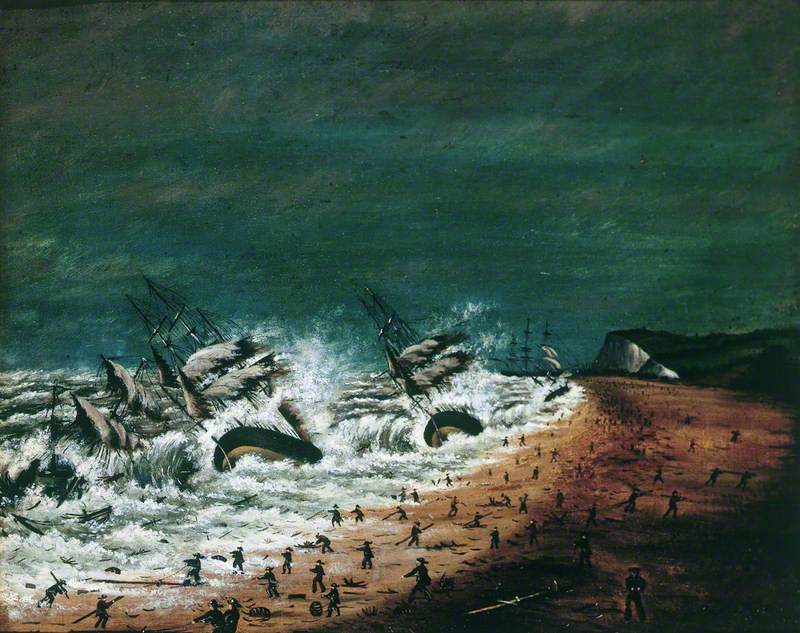
A Terrible Shipwreck: 12th February 1870 at Kingsdown near Deal 1870
Thomas Longley Mourilyan (1840–1922)
Compton Verney
A Royal Naval officer and amateur artist who was born at Deal, on 11th September 1841, the son of an ironmonger and brazier of the same name (1772–1851) and his wife Mary (d.1847). By the time his father died he was living at 88 Lower Street with his grandfather and uncle Edward (b.1798), who had retired as a Commander RN in 1839, and on 24th November 1854 he joined the Navy in HMS Nankin as a Boy, Second Class. Nankin was on the Chinese coast by late 1856 and served in the Second Opium War (1857–1860), for which Mourilyan received the campaign medal with the 1857 Canton bar. The 1861 census lists him as a Master’s Assistant in HMS Vulcan and by 1866 he had become a Navigating Lieutenant, initially in the Medusa, which he seems to have left in early 1869 before marrying his first wife, Elizabeth Irvine, at Deal, later that year. He appears to have been a witness to the Great Storm of February 1870 at Deal, if not involved in rescue work, and was stationed at Sheerness, perhaps already in HMS Basilisk (Captain John Moresby) when his only son was born there that August. Early in 1871 he sailed as Basilisk’s Navigating Lieutenant to the Australian Station, where Moresby named Mourilyan Harbour (near Cairns, Queensland) after him for discovering it in March 1872 during a search for shipwreck survivors. In 1874, the year Basilisk returned home, he also surveyed Milne Bay in Papua New Guinea, since a chart inset of it is credited to him. In 1873 his wife Elizabeth had died in his absence, aged 28, and in 1876 he remarried to Augusta Pain, only apparently returning to sea in 1878. The 1881 census lists him at Cheriton (Folkestone) and in 1888 he retired as a Staff Commander, subsequently living in Canterbury until his death in 1922. His son, the Reverend Charles Thomas Mourilyan, died in 1957.
Summarised from Art UK’s Art Detective discussion ‘Where did this shipwreck happen?’ and the ‘Families of Deal and Walmer’ website: Thomas Longley Mourilyan – Page 3 – Families of Deal and Walmer
Text source: Art Detective
